The « New Holland » Cultural Center at Saint-Petersbourg
Written by Fulmina Institut
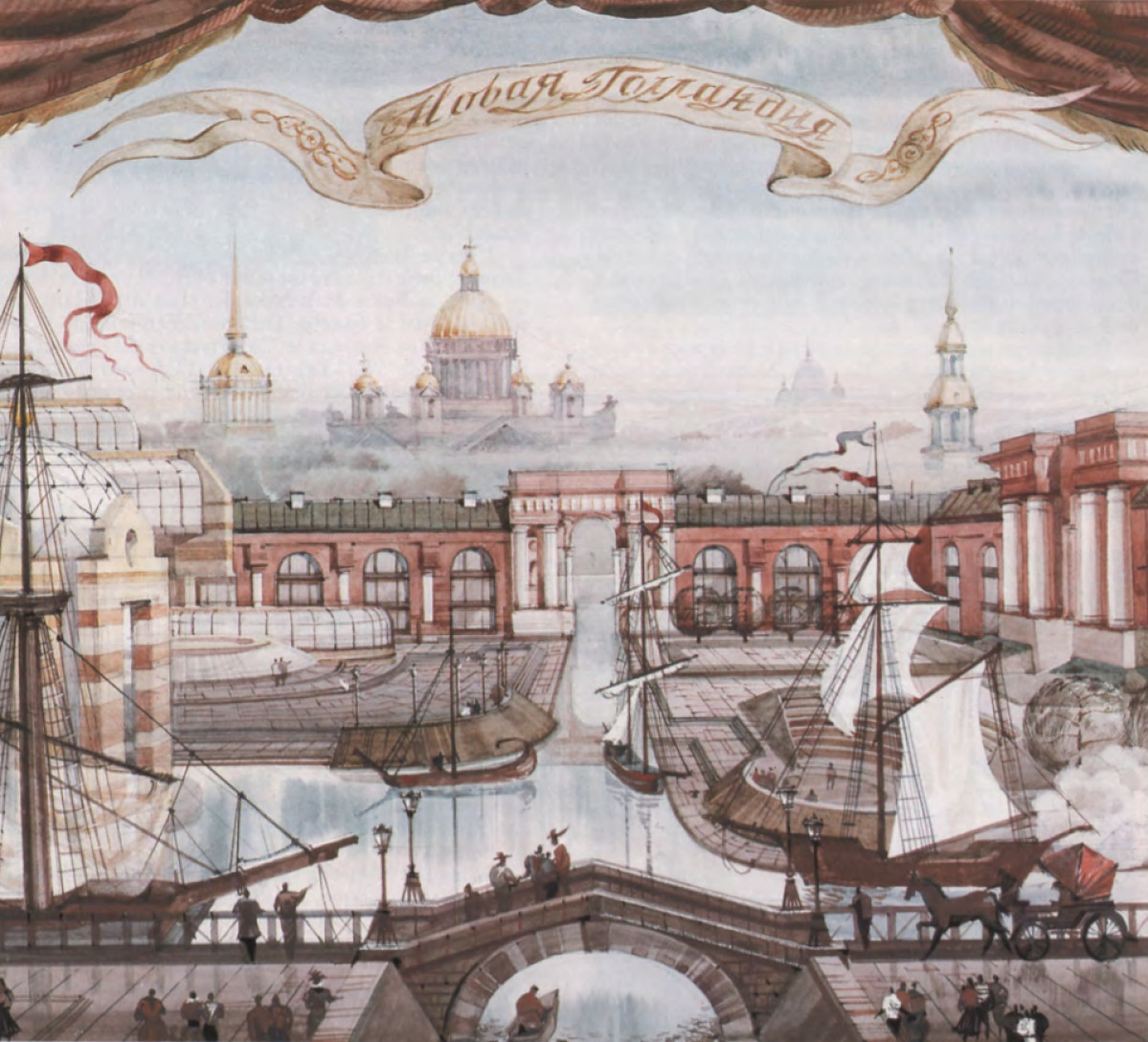
According to the project of Véniamine Borisovitch Fabritsky,
Fulmina Institut with Nelli Vladimirovna Petruk and
Pierre Alexandrovitch Petruk - Arca Foundation (under constitution)
Concept and Development of a Cultural Center at Saint-Petersburg - Russia
Ladies and Gentlemen,
On behalf of the inhabitants of Leningrad and the Municipality, I would like to welcome you to this exhibition, which represents one of the outstanding projects of the renascence of our city.
There can be no doubt that radical changes caused by «perestroika» can be carried out only by the educated people, with a high spiritual and cultural level.
One of the contributions to the process of moral development and spiritual renascence will become the creation of this remarkable cultural center in the heart of Leningrad, on an exclusive island known as New Holland. This concept is in full consent with new humanistic initiatives that relieve the ideals of truth, goodness and reason, proclaiming the primacy of various humanitarian ideas and emphasizing the importance of man.
I have known Veniamin Fabritsky's project for several years already, and I have been his ardent supporter from the very beginning. When I first saw it, the first thing that came to my mind - the engravings of St. Petersburg of the eighteenth and nineteenth centuries, the architectural lines gushed so extraordinary, the spirit of ancient Petersburg was so strongly felt.
And at the same time, I had before my eyes the project of a modern architect, a man of our time. I believe that this project will initiate a return to the ancient style and traditions of Saint-Petersburg; after this one other projects will come, and all our magnificent architectural ensembles will be revived. We must breathe new life into this wonderful island, as we try to breathe new life into our whole city.
It is impossible to isolate or give preference to one aspect of human activity; the international community as a whole agrees on the necessity of universal development, in which economic, social and cultural factors are indissolubly linked; only their joint actions contribute to progress. True development must include all aspects of life and all vital forces of society; everyone should participate in common efforts and benefit from these efforts.
The solution of our serious and sometimes difficult problems can not be constantly postponed for tomorrow, because tomorrow depends on what we are able to do today.
I believe in the success of our project and I hope that we will be able to achieve its implementation in 2 or 3 years.
I hope you will enjoy this exhibition, and it is particularly pleased to think that with the presentation of this project in France, the work of Jean-Baptiste de La Mothe and the close cultural ties that unite our two countries are here illustrated.
I am delighted that they can pave the way for a new and fruitful collaboration.
Anatoly Sobchak
Head of the Municipality of Leningrad 
New Holland
CONCEPT OF A CULTURAL CENTER IN LENINGRAD
Many values are being revised today. We strive to take a critical look at the past to better understand the world around us. And we came to the conclusion that only people with a very high level of education, culture and consciousness can make great changes and «perestroika» of this country.
The UNESCO declaration says that «culture should be the source of the creative power of progress». Many cities believe that their task to raise the intellectual and cultural level of their citizens is inseparable from the creation of grand cultural centers. They combine various activities and contribute to develop and improve the cultural and intellectual level of the population.
To build such a center in Leningrad we offer the territory of the island of New Holland. It is located in the historic center of the city, nearby the main arteries and squares. The architectural ensemble of New Holland (as it is called since the time of Peter I, the founder of the city) is a monument of early Classicism. Its origins go back to the epoch when Saint-Petersburg became a shipbuilding center. The general concept of the ensemble was realized by the famous Russian architect Savva Chevakinsky. Another eminent architect, Vallin de La Mothe, designed the impressive facades and arches overhanging the canals.
The island of New Holland is next to the Troud Square; the latter is connected to the Academy of Arts by a bridge across the Neva. The Theater Square (Teatralnaya) with the famous Kirov Academic Opera and Ballet Theater and the Leningrad Conservatory are very close to the island. Museums of Edward Napravnik, Alexander Blok, Vsevolod Meyerhold, as well as the places of the Teacher's Club (former Yusupov Palace), of the Saint Isaac's Square (Isaakievskaya) and the Palace Square (Dvortsovaya) are all very close to the island.
By consolidating the island of New Holland with the Theater Square, with the Troud Square and other famous cultural and historical ensembles, we could create one of the largest cultural centers.
Our recent experience proves that the overall approach to city development needs to be changed. We believe in freedom of artistic expression, pluralism, in a chance to create an environment where everyone can express and realize themselves.
Architecture is the language of national culture, of its past and present. Currently, the majority of the population lives in cities. We do not think they should be turned into museums, but if the past is forgotten, the future is doomed. The city is not only a living space. It offers different forms of expression of art. It often speaks to us the language of the spirit.
The island of New Holland has a wonderful future. Its romantic style, ancient buildings, impressive arches, spanning the canal, the proximity of the Gulf of Finland and the granite banks of the Neva, the numerous canals surrounding and dividing it (dozens of boats and small yachts could swim there again) - all this will help attract bright and lively festivals, fairs, carnivals, shows on the water in summer and on ice in winter, fireworks, etc.
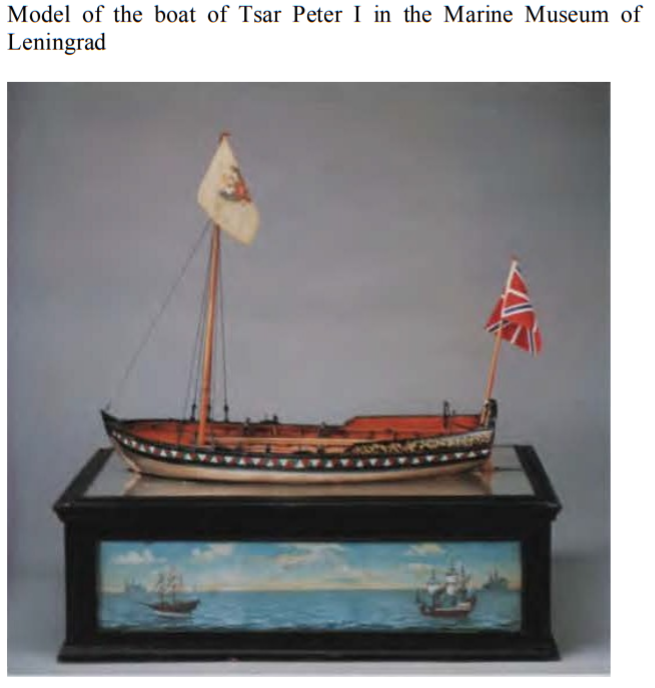
The ancient edifices of the island can be used for conferences, film and theater festivals, concerts of classical and modern music, art exhibitions and various literary festivals. They can also accommodate collections of Ballet and Lyric art, a museum of scenic decor, souvenir shops, theater and literary studios.
The first level of the edifice, facing the Moika and the Krushtein canal, can be transformed into bookstores, antique and modern art shops, as well as cafés for poets, artists and musicians. A number of edifices can also serve as small comfortable hotels.
Each national culture needs a vital and intensive comparison with the culture of other countries. Every day thousands of people from all over the Russia and around the world arrive in Leningrad. Later on it would be nice that in parallel with the contacts between politicians and individuals also a diverse public could more and more establish contacts.
In the main center of the «New Holland» different people and nations will have their own centers to present their cultures, traditions, lifestyle, arts and crafts.
The main cultural center should become a place for international meetings, human contacts, peace and harmony among people.
Nature created in the delta of the Neva a unique harmony of land and water, which was successfully used by the architects of Saint-Petersburg. The particular atmosphere of the city, its beautiful architectural ensembles, the gold of its domes and its spiers, its numerous canals and rivers should determine the image of the projected cultural center. We must try to breathe into it a unique poetic aura that attracts thousands of people.
We believe that the reconstruction of New Holland will lead to the revival of Russia's national treasures and to exchanges between various cultures.
The reconstruction should be based on the following principles:
Humanism;
An analytic approach (to identify fundamental problems);
A global approach (coordination of economic, social, environmental, historical and cultural goals);
A realistic approach (feasibility of economic, technological, structural and legal actions);
Efficiency (forecasting of social, economic and ecological consequences of the restoration).
Multifunctional edifices will allow each type of activity to develop in the best way. The range of activities will extend from theatrical and cinema concert halls to an congress center, from strolls along the banks of the canal to festivals in a square courtyard, from shops and offices to exhibition centers for businessmen and libraries, etc., but all the elements of the Center must be balanced and structurally related in the general scheme.
The idea that progress is based on increasing the technical level and production volumes is now giving place to the consciousness that the value of the cultural treasures of our heritage is much more important than the technical feats that are rapidly aging.
We must not dismiss either the legacy of the past, nor the ideas of the present, at the rist to threaten the future.
Thus, the main goal of the concept is the restoration and transformation of New Holland into a multifunctional center that preserves and makes maximum use of existing exceptional architectural monuments.
This vast, complex and noble task is indissolubly linked with the development and progress of our society, which in turn requires a new approach, a new form of thinking and spiritual resurrection and also a regrouping of creative forces.
HISTORY
The uniqueness of the city proceeds from its primordial destination: to establish a bridgehead for political, economic and cultural relations between Russia and the rest of the world.
The vast territory stretching from the Neva to the Moika and from the Admiralty to the Finnish Gulf, turned into a giant shipyard in the first decades after the foundation of Saint-Petersburg. The sound of axes and saws, the smell of freshly chopped wood and resin, all this water and these canals crisscrossing the ground reminded Peter I the Holland, about which he had a very high opinion. That's why this whole quarter received its name. Subsequently, the name New Holland was applied to the territory of Galerny island separated from the rest of the city by the Moika, the Admiralty Canal and the Kryukov Canal. During the reign of Peter I an estate was built on the island, consisting of a French garden, a small palace and a pond.
Later the island passed to the Admiralty Council, which decided to build warehouses there for drying and storing timber.
The warehouses plan, created by the architect Savva Chevakinsky, was approved in 1765, but later in the same year Catherine II entrusted the work to construct the warehouses facades to the architect Vallin de La Mothe.
The edifices along the banks of the Moika were completed in the late 1780s, while those that bordered the Kryukov Canal were completed only by 1848-1849.
The third line of warehouses along the Krushtein Canal and the portal with an arch facing the Kryukov Canal was never created. A naval guardhouse building was built in the western part of the island in 1828-1829 according to the plans of A. Shtaubert. New Holland has become a center of attraction for Russian architects, artists and art critics since the day of its creation. A detailed plan of New Holland was compiled in 1834. At the beginning of the XIX century New Holland was painted by A. Martynov, who was very sensitive to the beauty of Leningrad. In the early 1900s, the entrance portal of New Holland was carved out of wood by Anna Ostroumova-Lebedeva, what also added to the popularity to the ensemble of New Holland in the artistic circles of the capital of Russia.
The unique features of the architectural ensemble of the XVIII century, its harmony and largeur, its noble simplicity and classic proportions still attract residents and guests of Leningrad.
Authors of the project:
Director of Architectural bureau: Veniamin Fabritsky
Architects: Eugeny Kouprianov, Vladimir Koshaev
Copyright Fulmina Human Resources Foundation
New Holland General View Etching
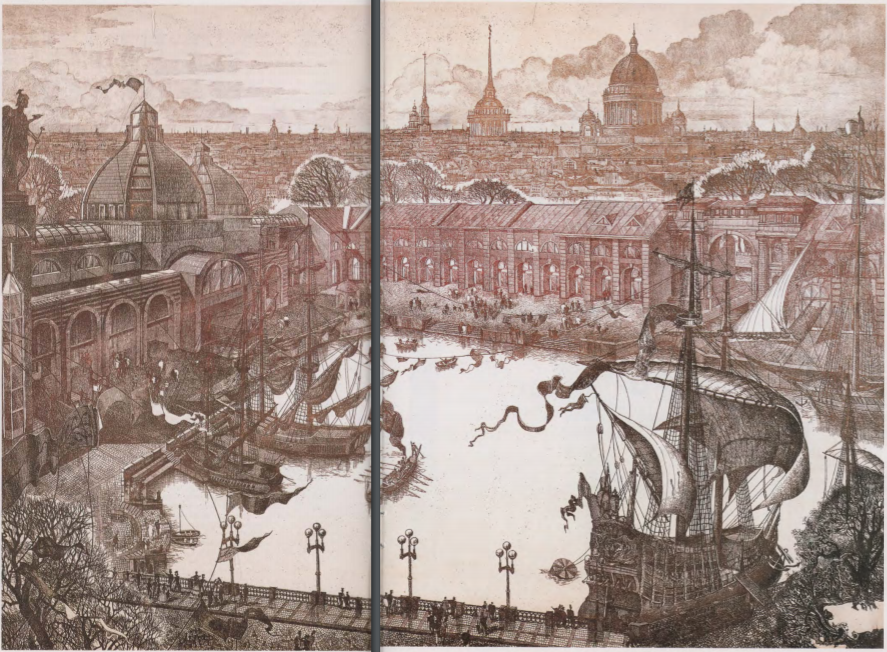

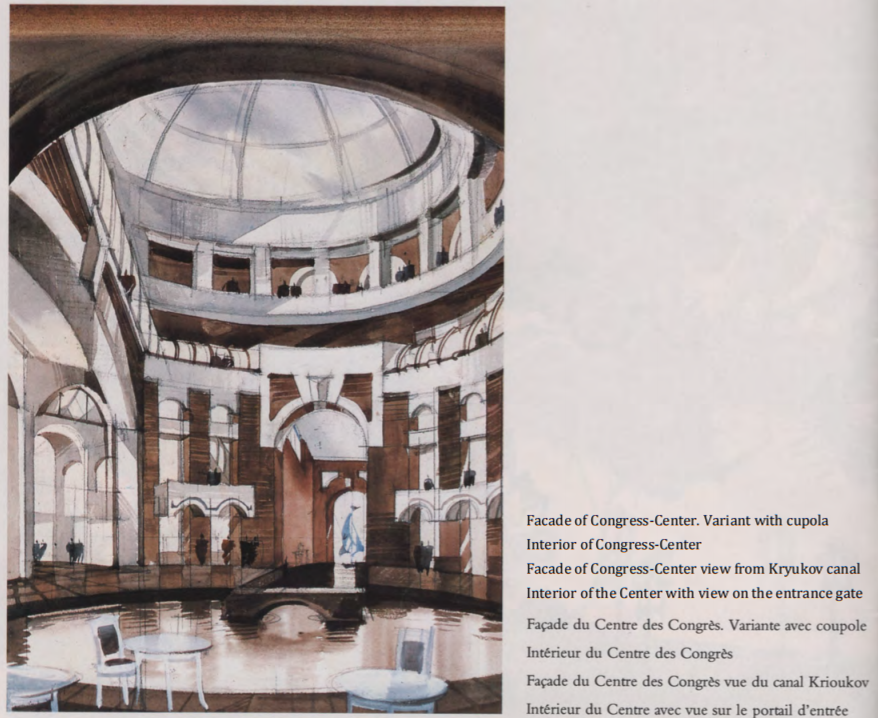
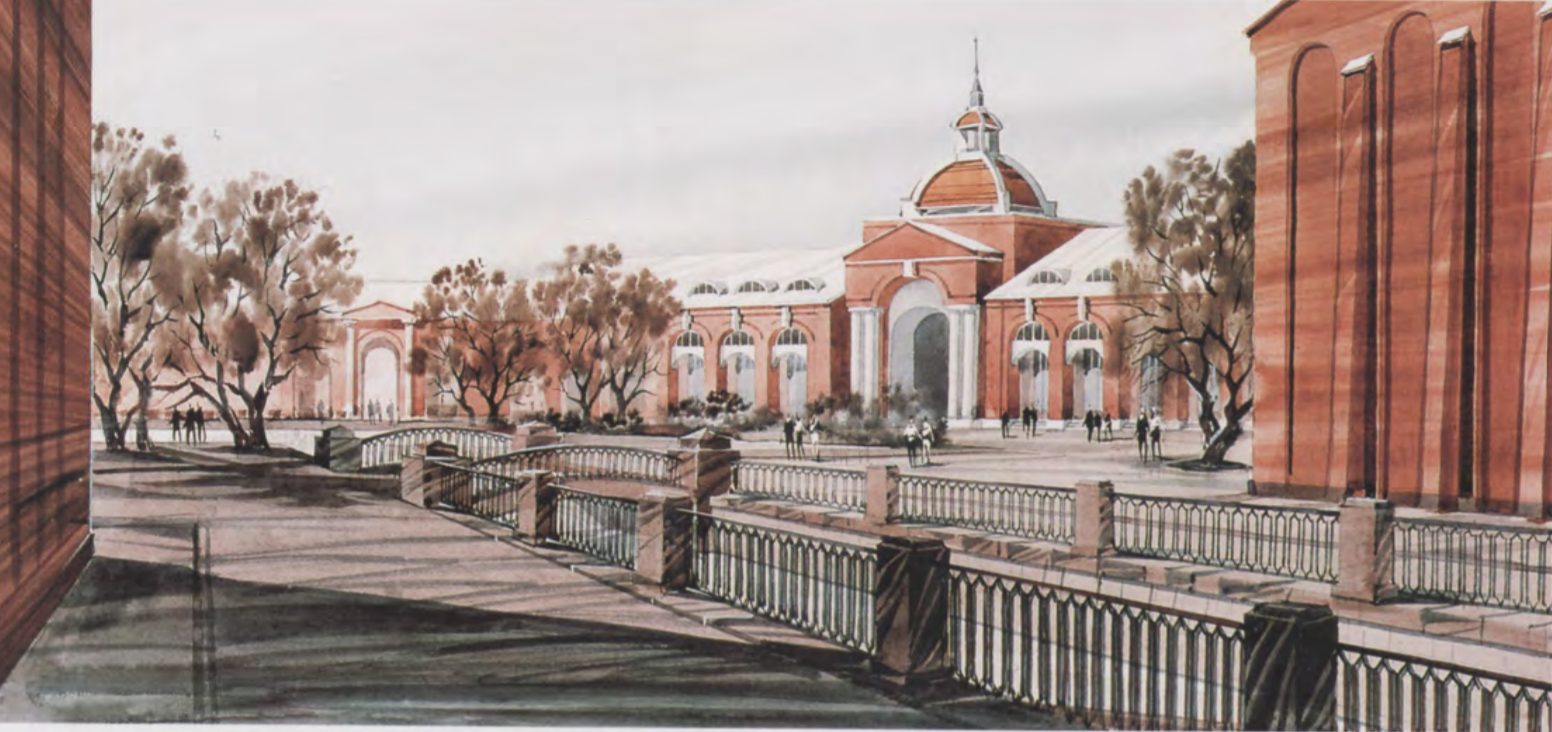
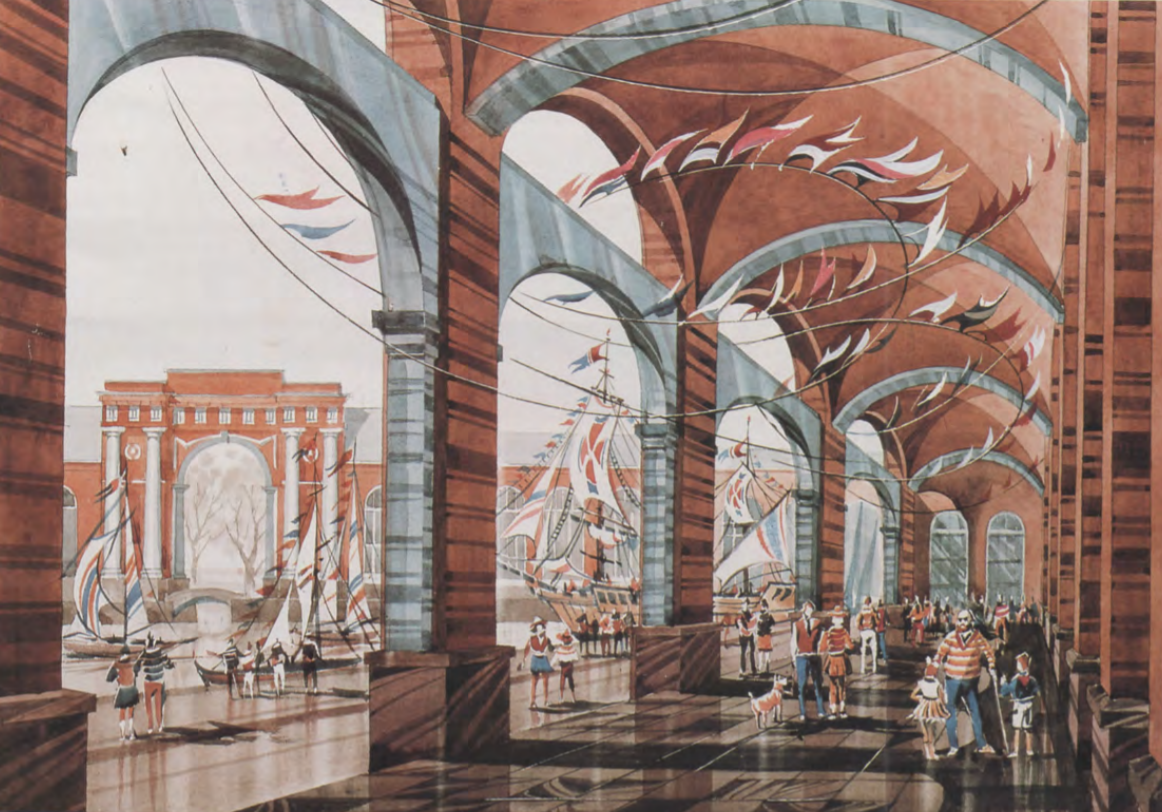
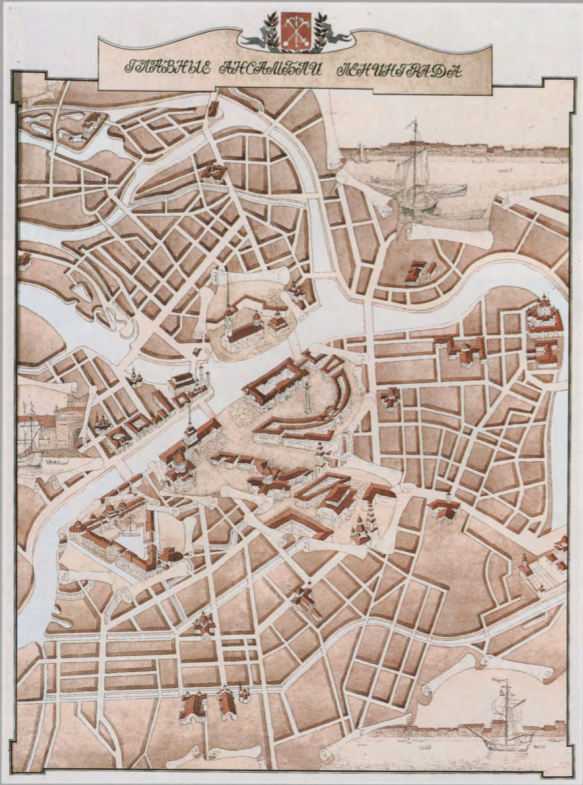
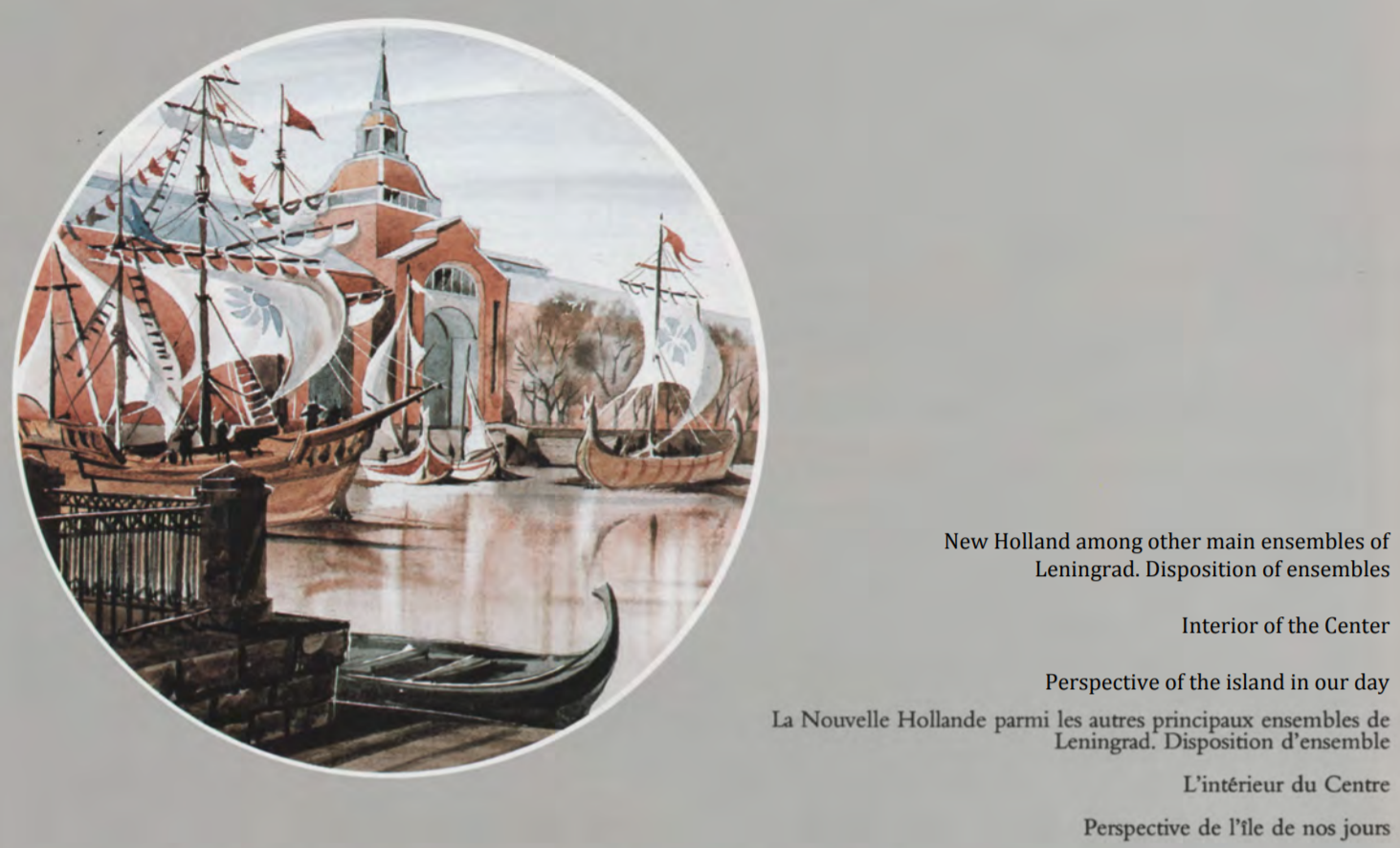
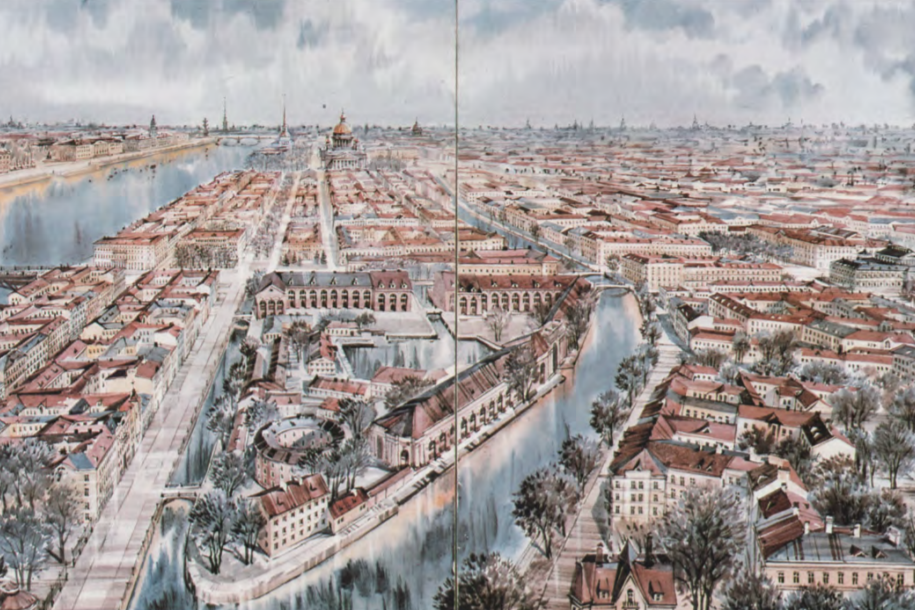
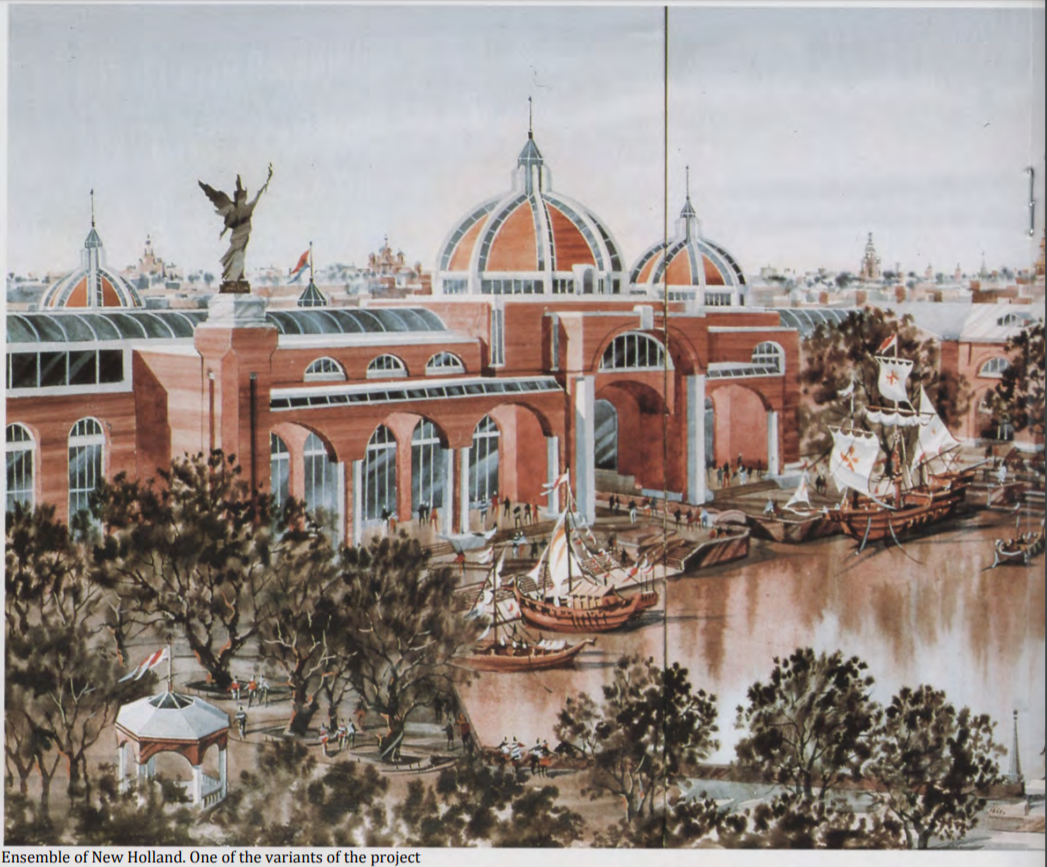
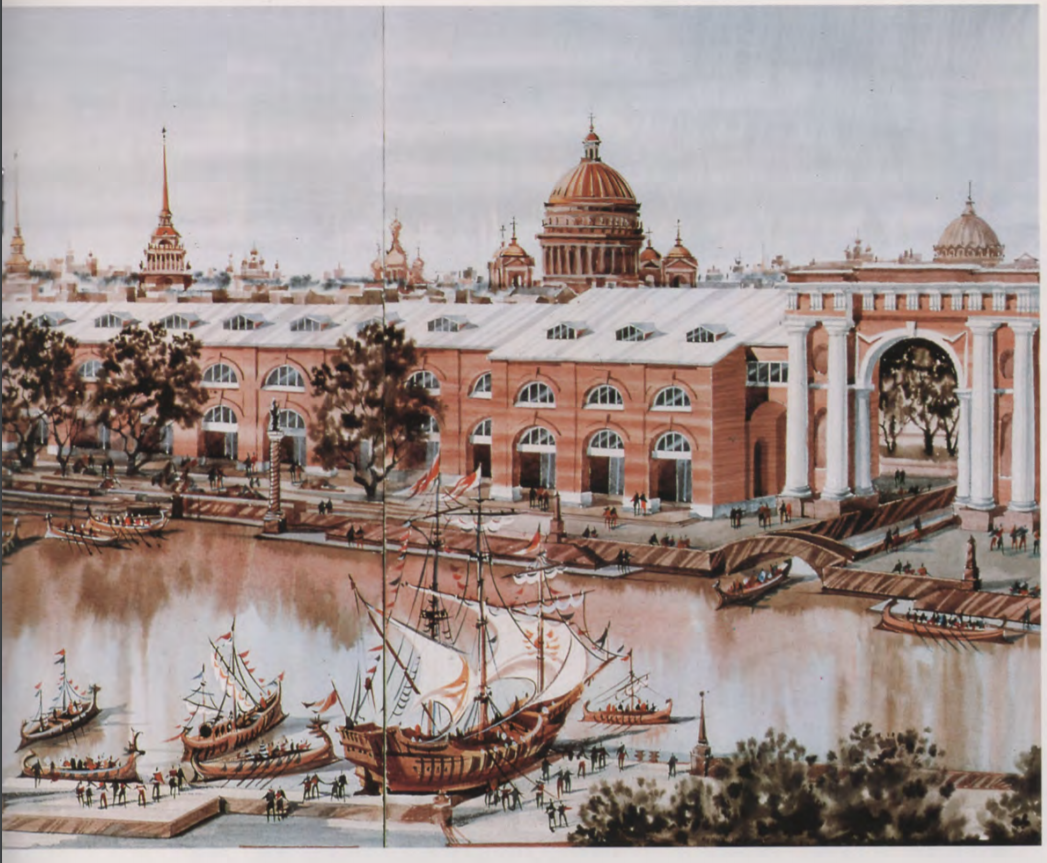
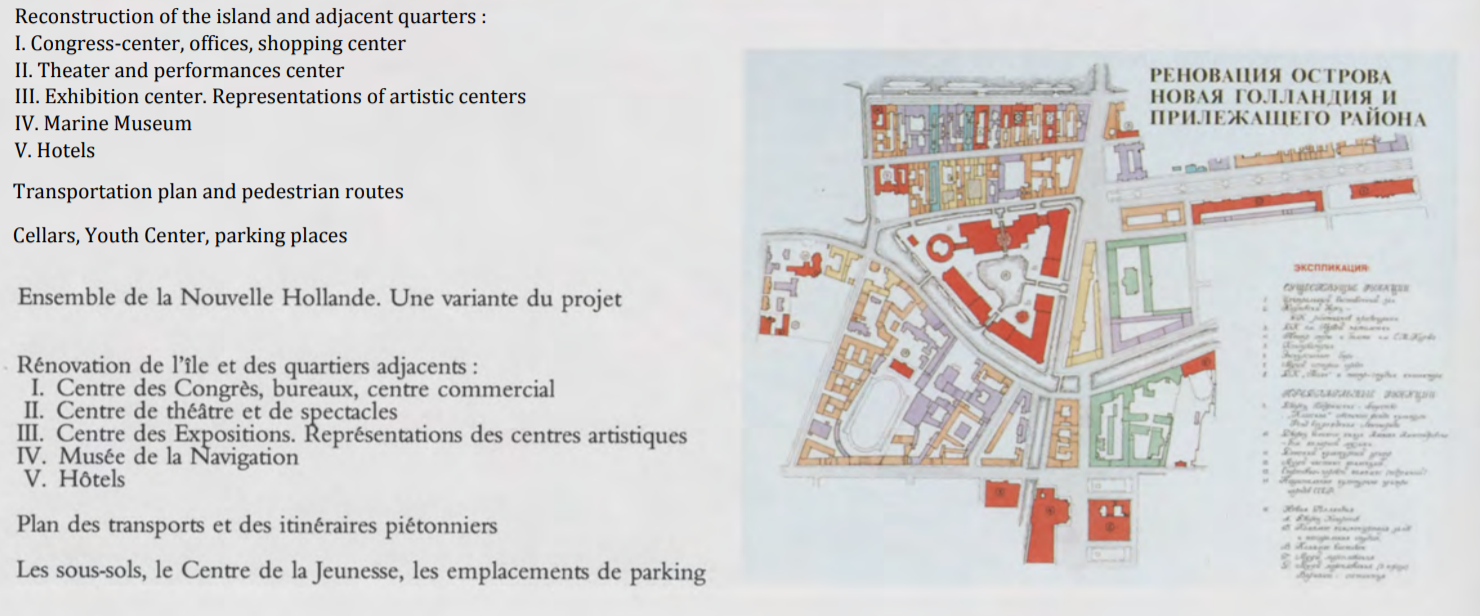
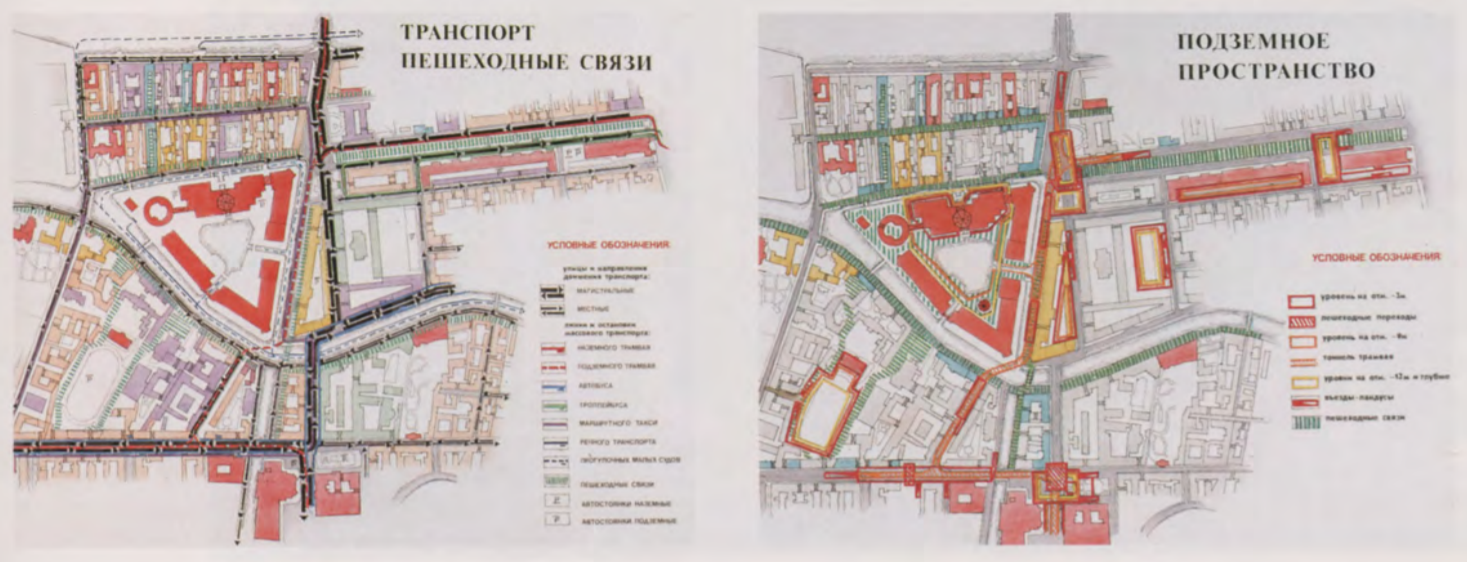
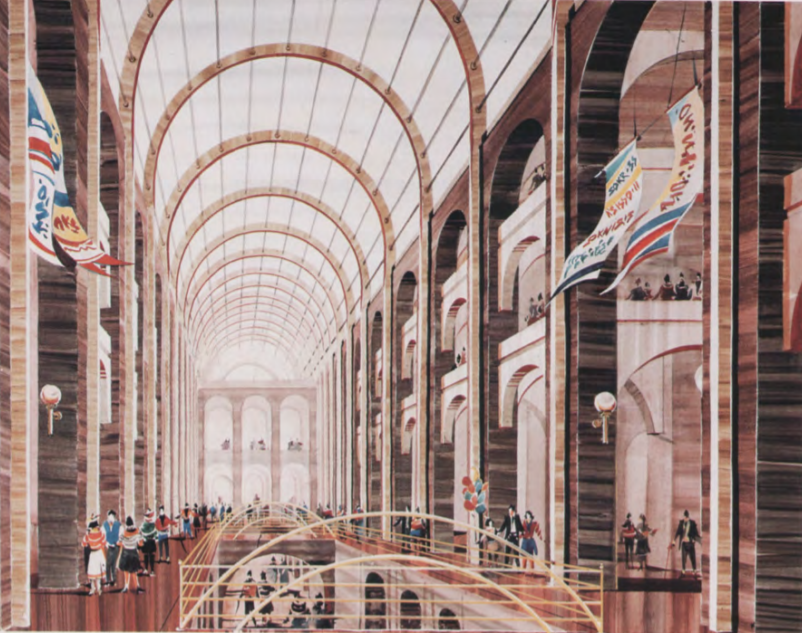
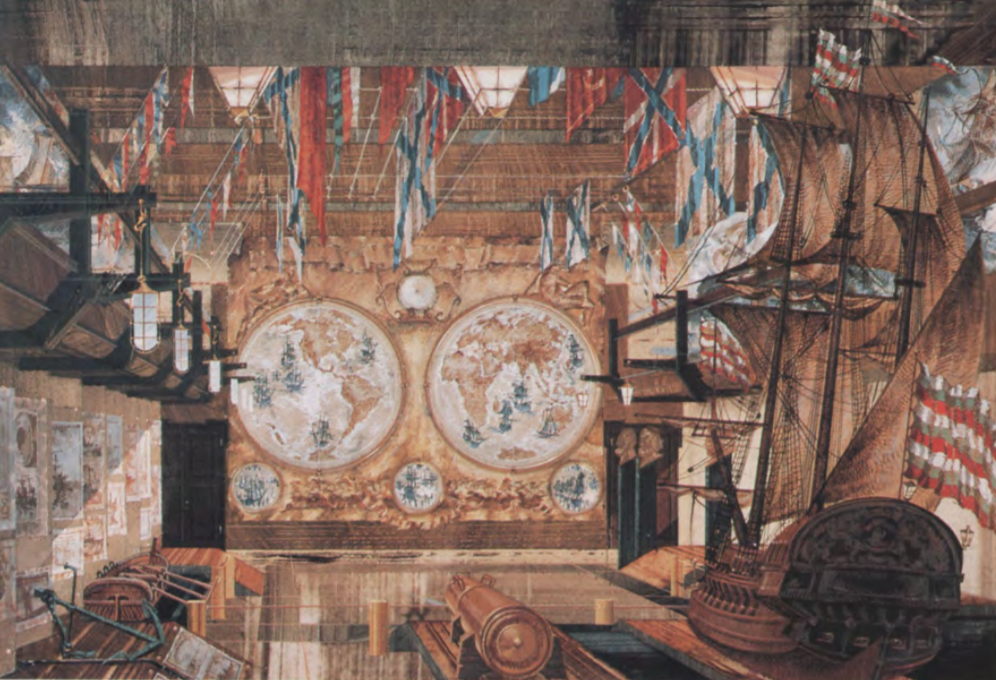
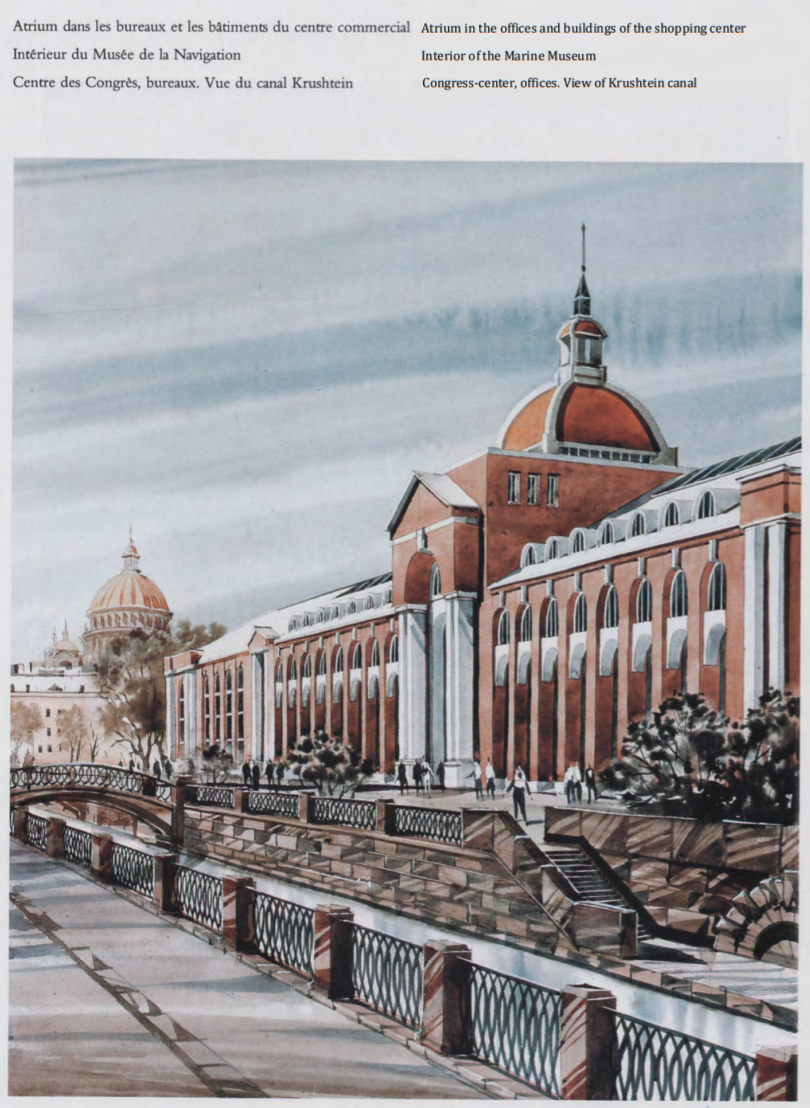
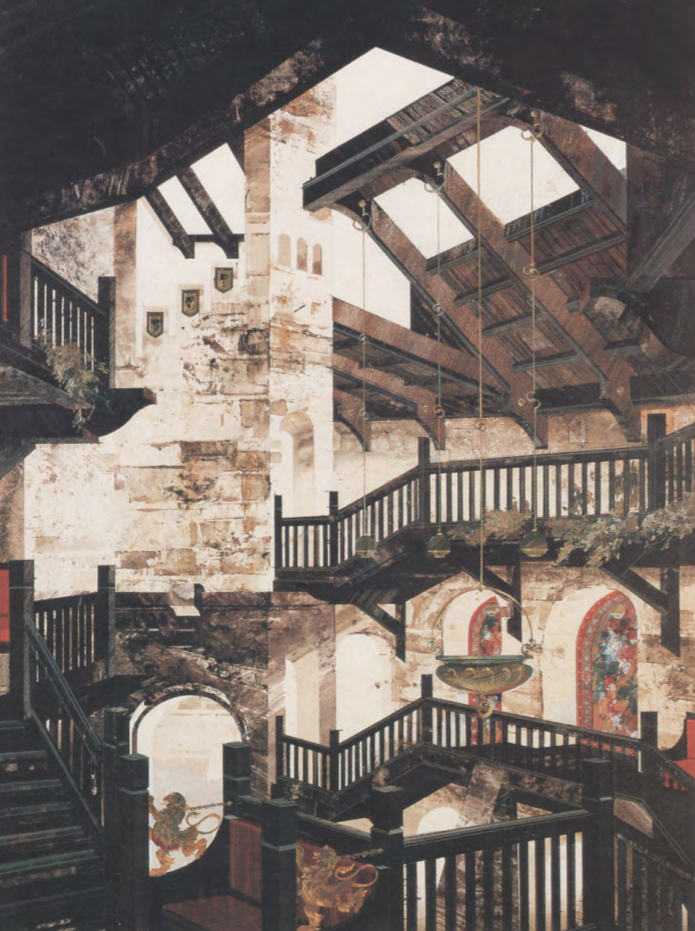
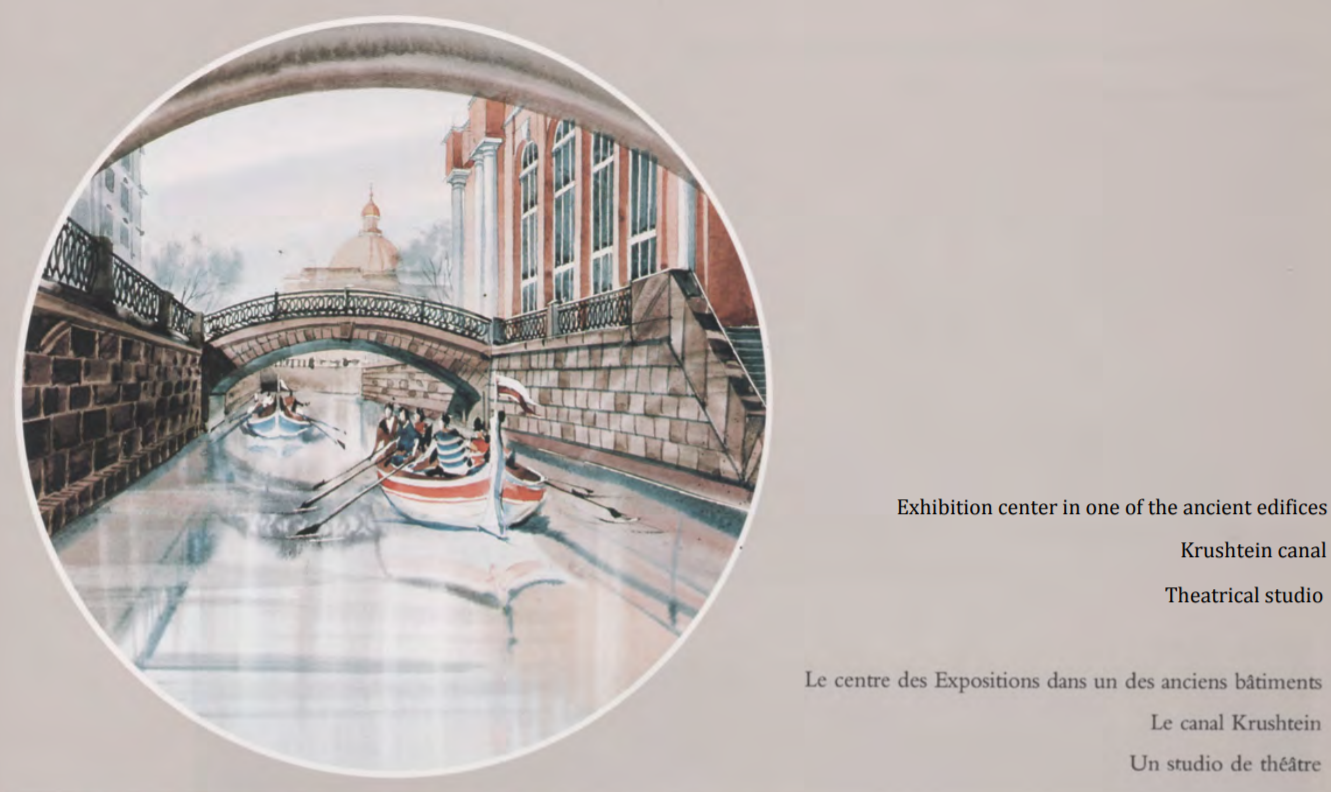
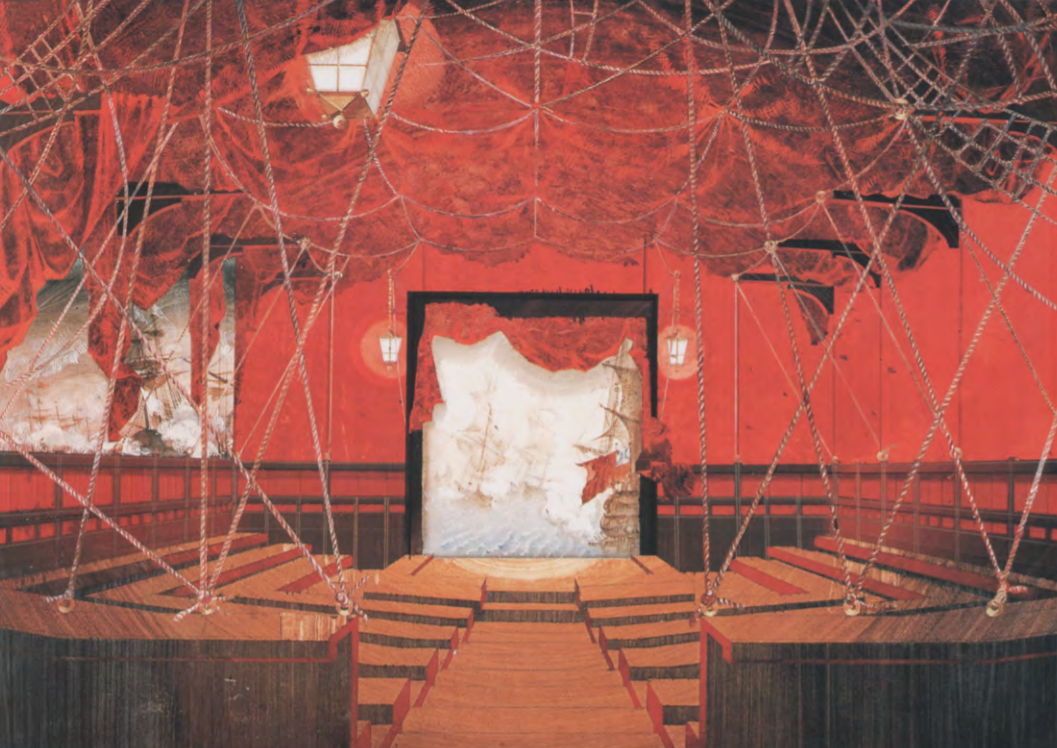
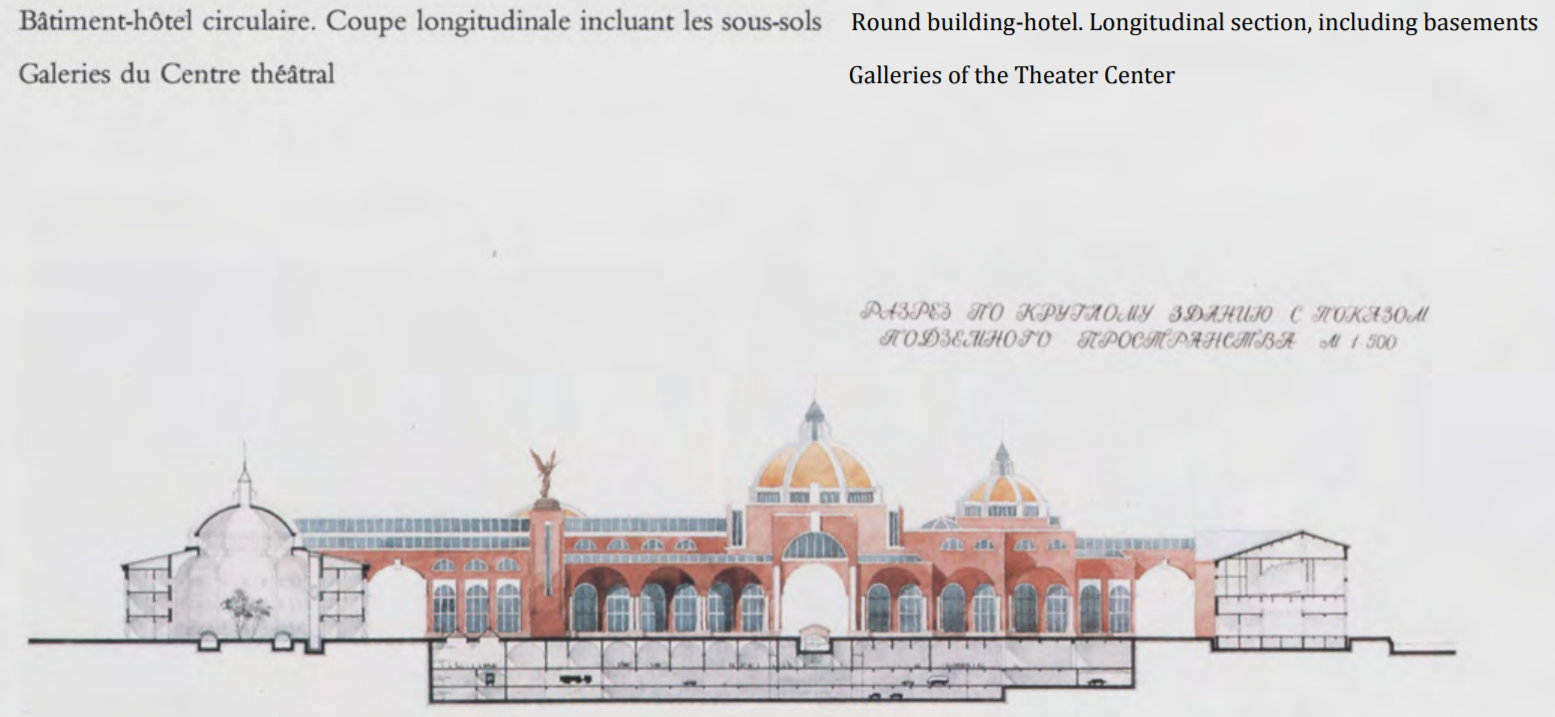
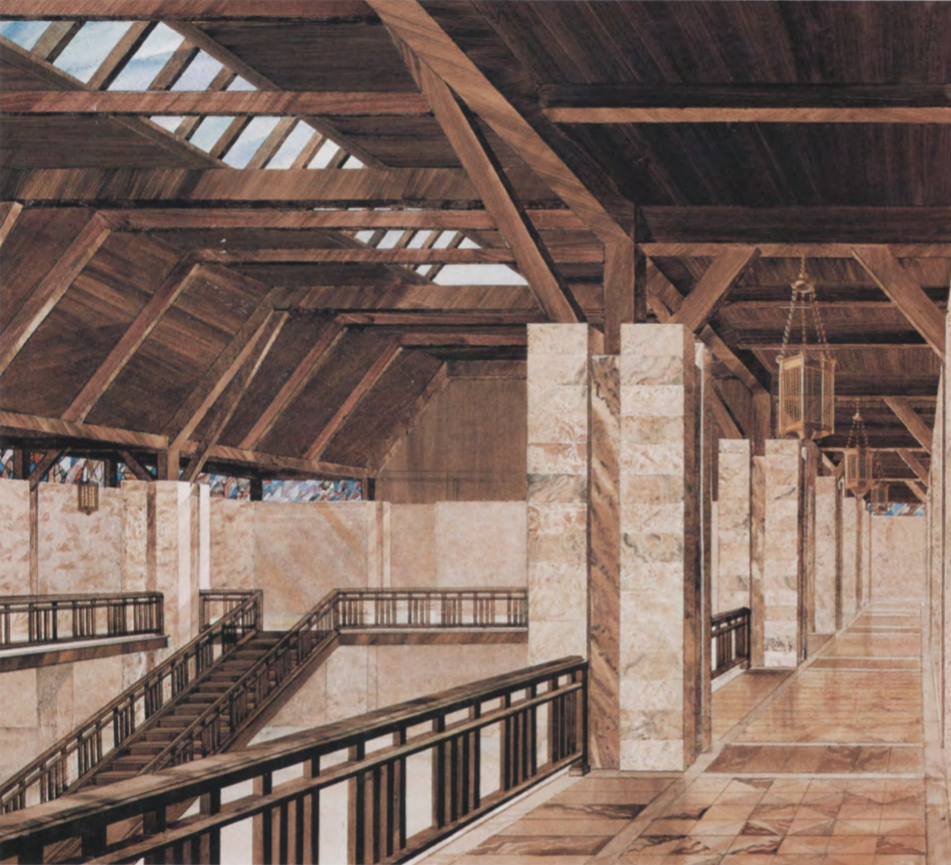
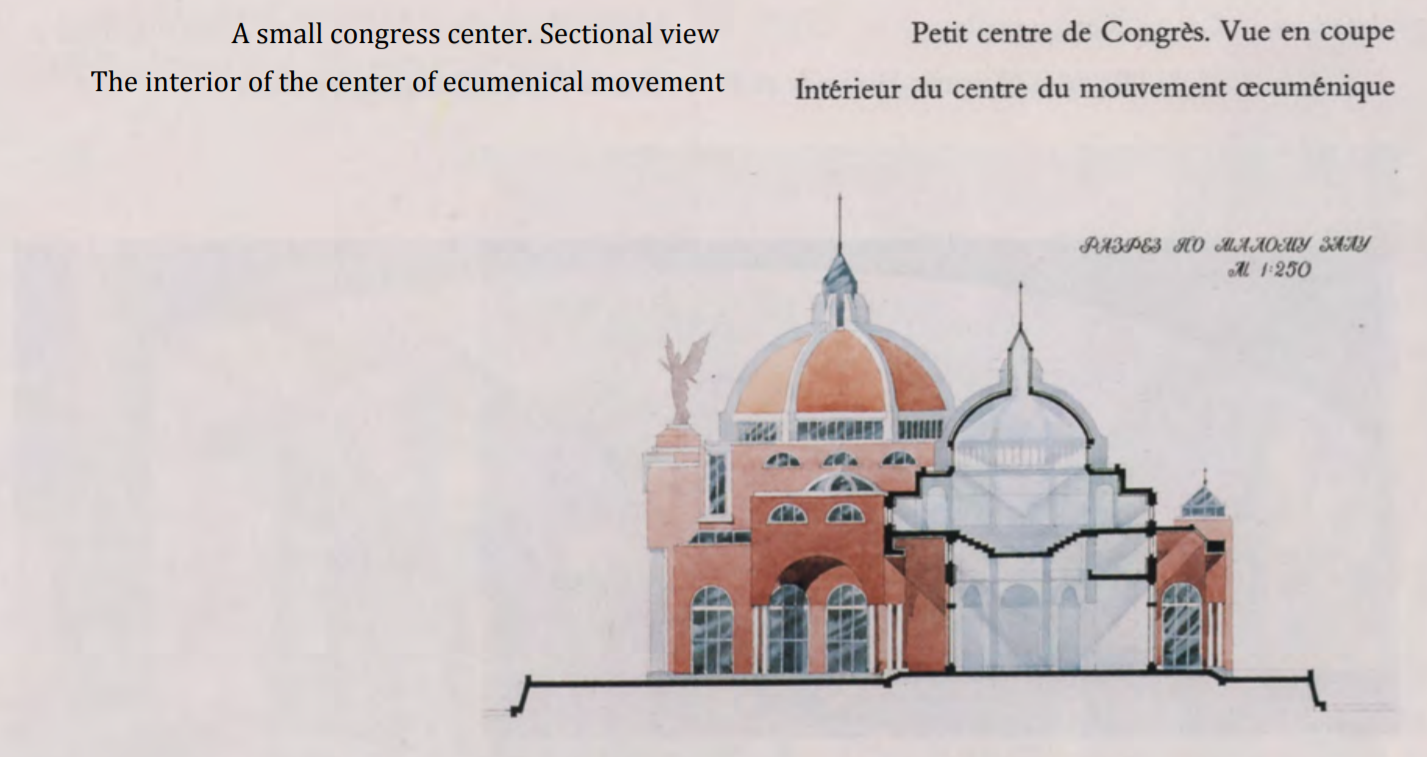
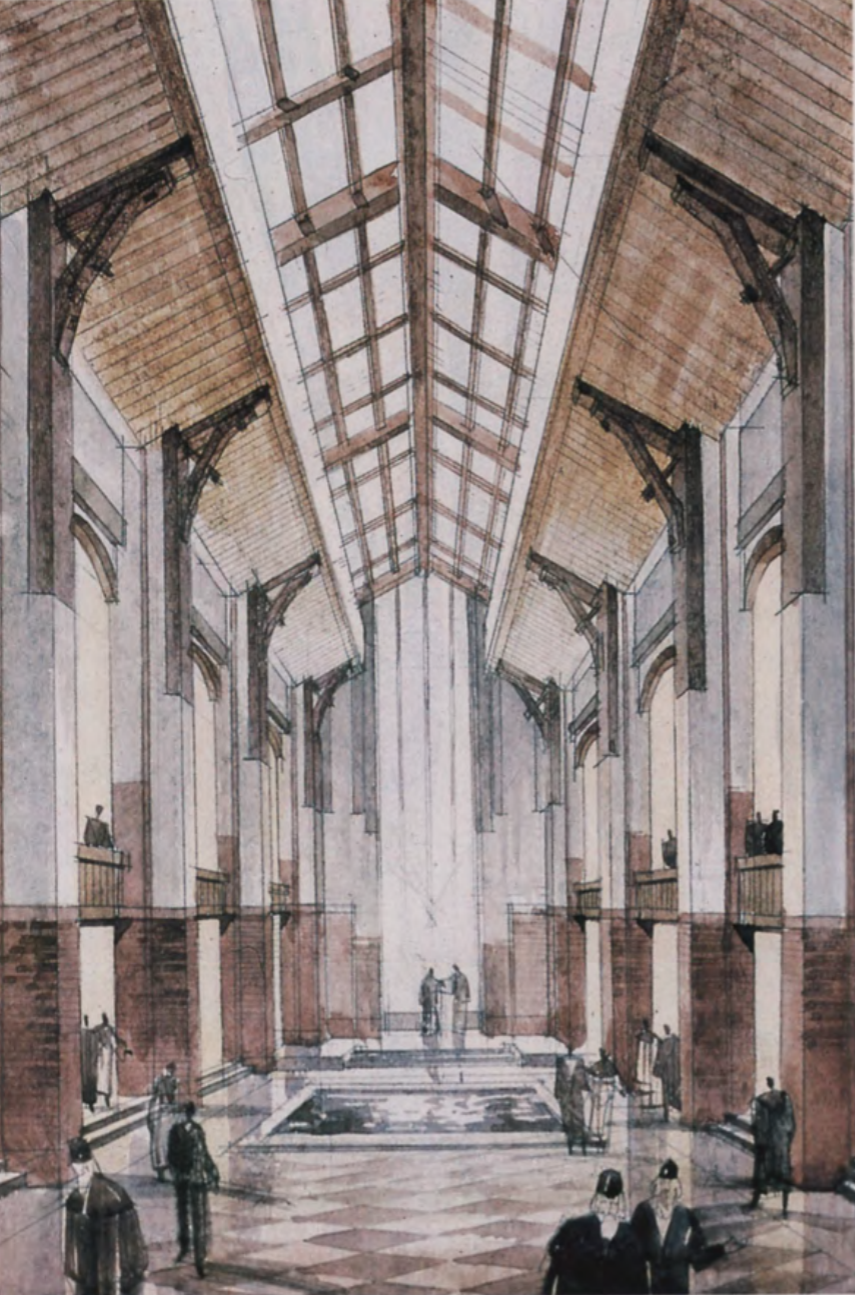
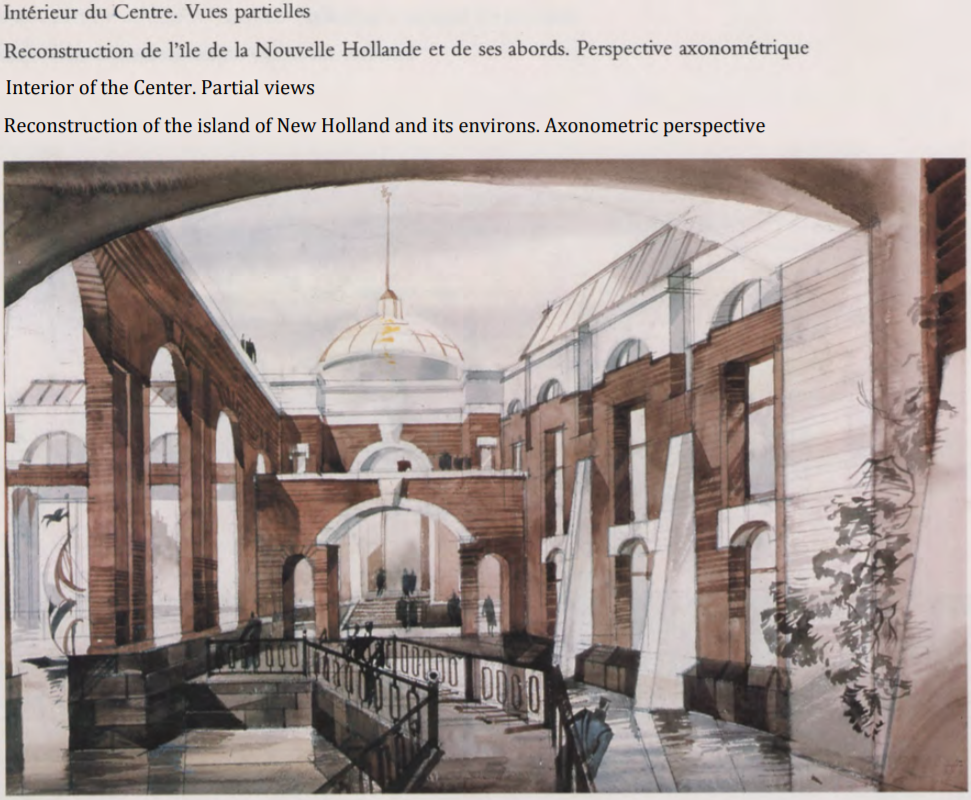
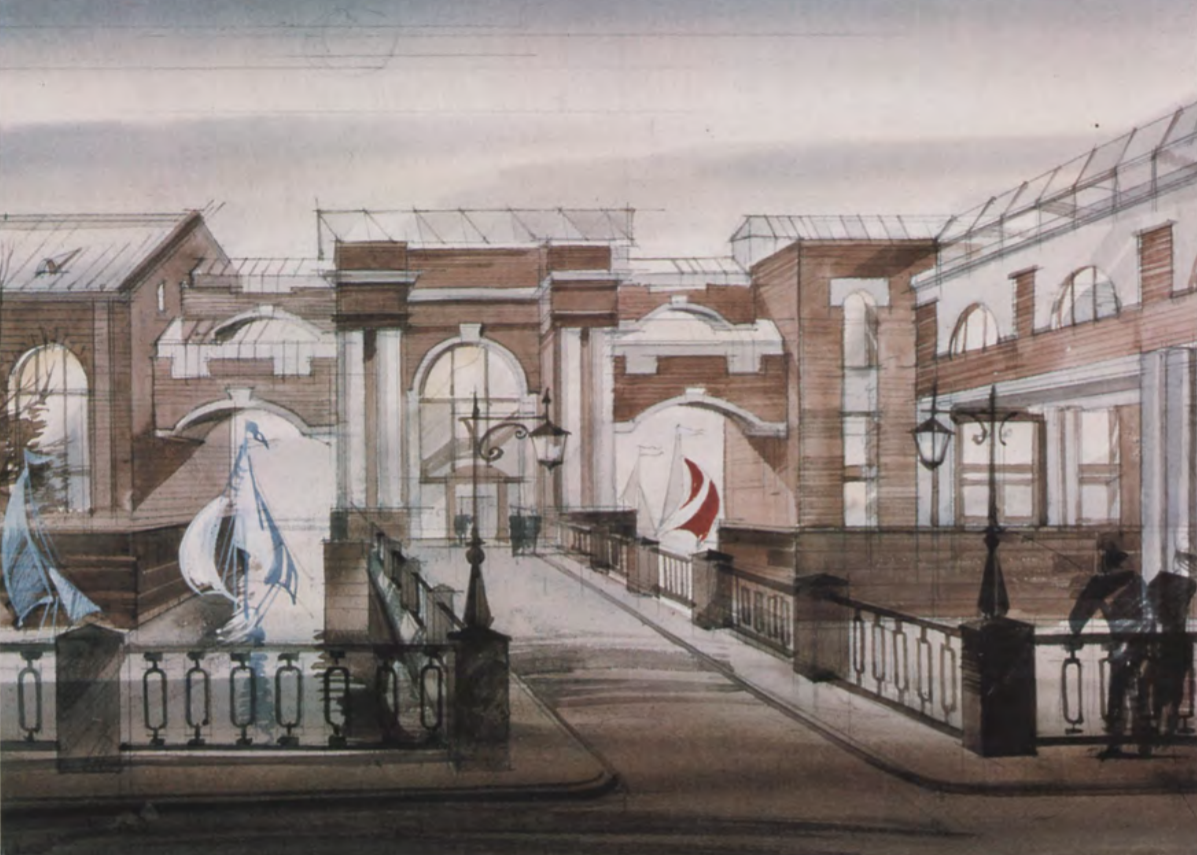
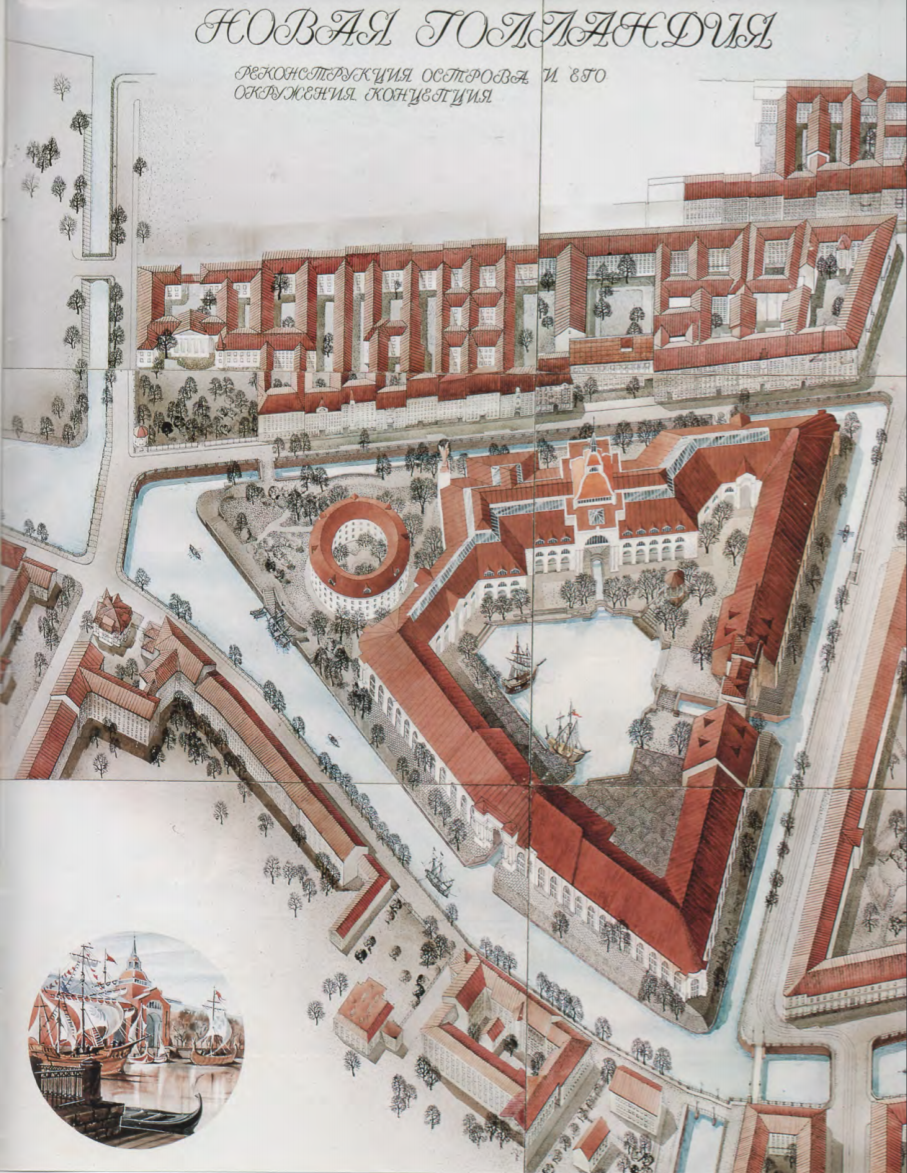
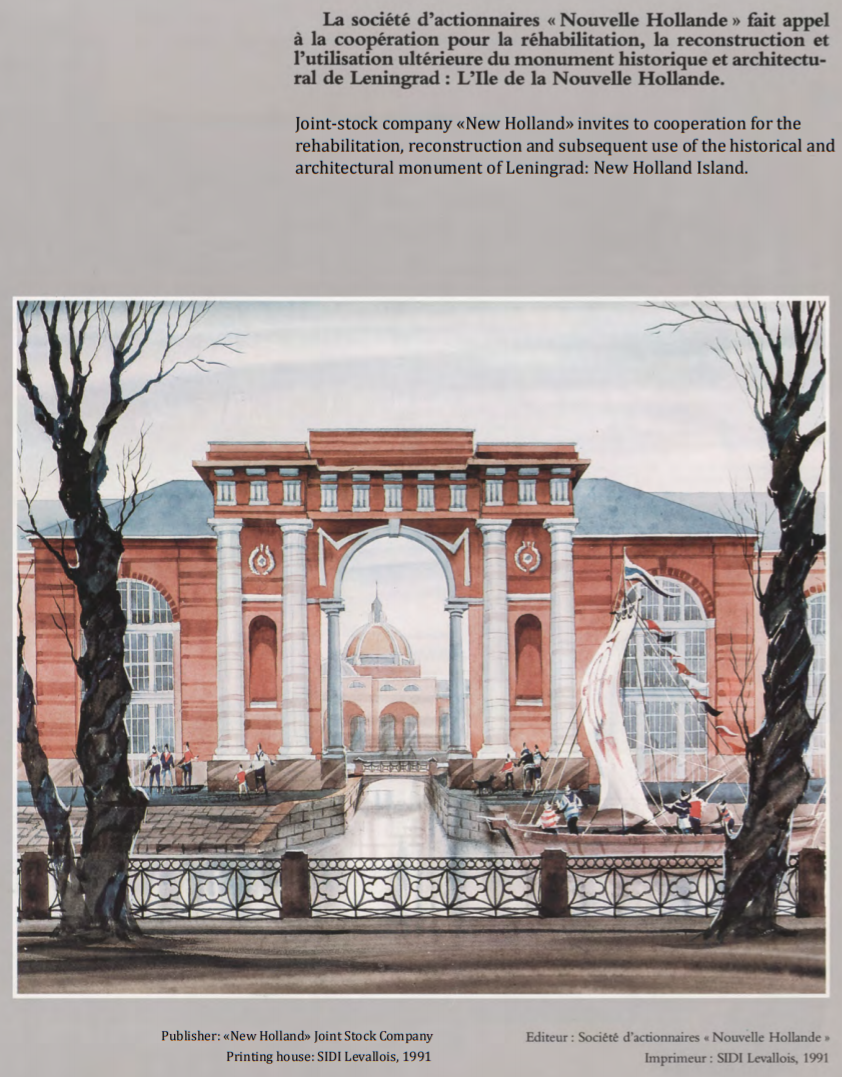
Powered by Froala Editor
